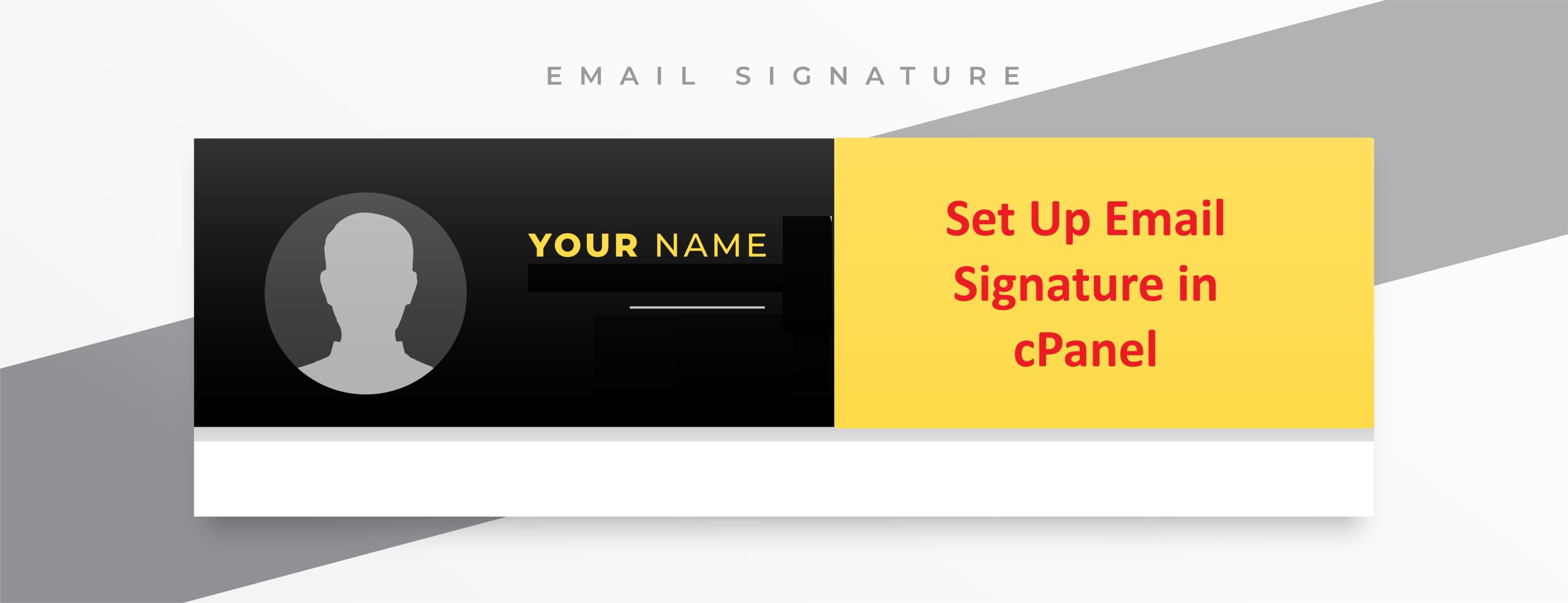Setting up a professional email signature in cPanel involves creating or editing your email account through Webmail
An email signature in cPanel refers to a personalized block of text (often with formatting, links, and images) that is automatically appended to the bottom of outgoing emails when using the webmail clients such as Roundcube.
Below are the steps to create a signature using Roundcube, the most commonly used webmail client within cPanel.
Table of Contents
Step-by-Step Guide to Setting Up a Professional Email Signature in cPanel:
This signature typically contains professional or personal information like:
- Your name
- Job title or position
- Company name and logo (if applicable)
- Contact information (e.g., phone number, email address)
- Website link
- Links to social media profiles
- Legal disclaimers or confidentiality notes (optional)
1. Login to cPanel Webmail
- Access Webmail: Go to
https://example.com/webmailor login to cPanel and navigate to Email Accounts. - Log into Webmail: Select your email account and click on Check Email. You’ll be presented with options to use different webmail clients like Roundcube.
2. Select Roundcube as Webmail Client
- After logging in, choose Roundcube from the list of webmail clients (if it’s not set as the default).
3. Access Roundcube Settings
- In Roundcube, click on the Settings option (usually found in the top-right corner).
- From the settings page, click on Identities in the left-hand sidebar.
4. Create or Edit Your Identity
- Select your email address (identity) from the list, or if you are setting up a new one, click Create.
- Under the identity settings, you can enter the Name you want to appear in outgoing emails.
5. Create the Email Signature
- In the Signature field, type or paste your professional signature.
- Formatting the Signature: Use the formatting tools (bold, italics, underline, fonts) to customize the text.
- Add your name, title, company name, phone number, and website.
- Optionally, include social media links or a professional logo (you can upload an image file and insert it into your signature).
- HTML Signature: Make sure the HTML Signature checkbox is selected to enable rich-text formatting.
6. Insert Links and Images (Optional)
- To add links (such as your website or social media profiles), highlight the text and click the link icon to insert URLs.
- To include an image (like a company logo), click the insert image icon and paste the URL of the image or upload it from your computer.
7. Save Your Signature
- Once you’ve completed your signature, click Save.
8. Test Your Email Signature
- Compose a new email and check how your signature appears to ensure it’s formatted correctly and that any links or images display properly.
Tips for a Professional Email Signature:
- Keep it concise and well-organized.
- Use a clear font and avoid excessive colors or fonts that make it look unprofessional.
- If adding a logo or image, ensure it’s small in size so that it doesn’t take too long to load.
- Include contact information (phone number, website, address) for easy reference.
- Consider adding a disclaimer if your industry requires it (e.g., confidentiality statements).
The email signature ensures consistency and professionalism in email communications by automatically adding relevant information to the end of each message.
The setup and customization of the signature are usually done through the Webmail interface associated with cPanel, particularly through Roundcube, which is the most commonly used webmail client.
This signature helps recipients quickly identify who the email is from and provides useful contact details at the bottom of every email you send.




